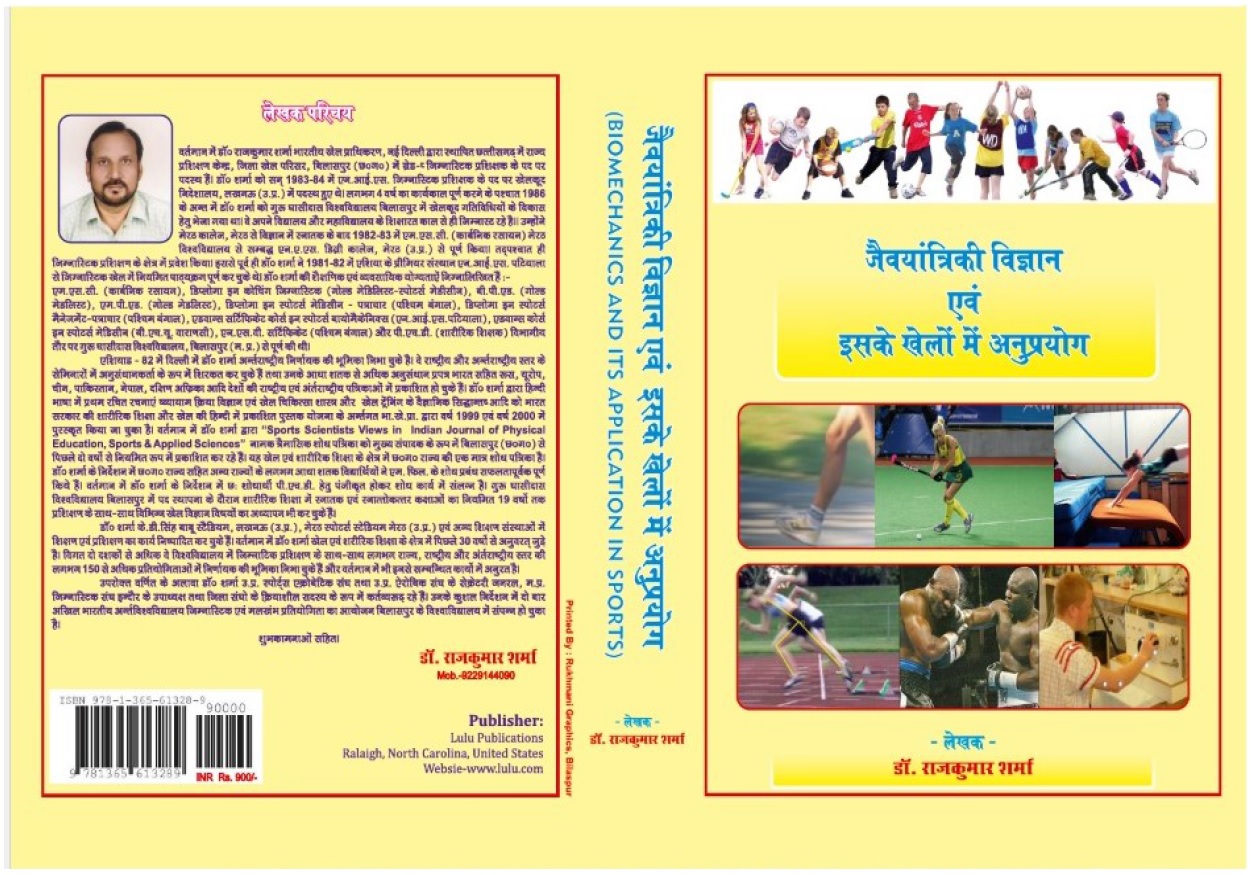| S.No. | Total View Count | Title of Manuscript | Page No | Download/ PDF |
|---|---|---|---|---|
| 1 | EFFECT OF PHYSICAL AND MOTOR FITNESS COMPONENTS ON PLAYING ABILITY OF MALE CRICKET PLAYERS Author: Rajneesh Mehta1 & Dr. B. John2 | 15-19 |  6 6 |
Article info
doi no.: 05-2016-44975451; https://doi-ds.org/doilink/04.2024-36789772/IJPESAS/V13/NO.2/APRIL-2023/A3
AFFILIATIONS:
1. Research Scholar, Department of Physical Education, Dr. CV Raman University, Kargi Road Kota Bilaspur C.G.
2. Associate Professor, Department of Physical Education, Dr. CV Raman University, Kargi Road Kota Bilaspur C.G.
Traditionally fitness is not considered an essential element in cricket because it is believed that the game of cricket is 90% mental and 10% physical with tactical and technical skills being more important than physical prowess. In the last 20 years, things have changed and physical fitness is considered an integral part of cricket. Hence the present study was planned to assess the association between selected physical and motor fitness components on the playing ability of male cricket players. To conduct the study 150 male cricket players from Himachal Pradesh were selected. The sample includes Ranji trophy probable, interuniversity and intercollegiate level male cricket players and the age range of the sample was 19 to 32 years. The power Test (Vertical Jump) was conducted with the help of a wall-mounted board. Speed testing was done with the help of a 20-meter and 40-meter speed trial. Run a three was used to assess the agility of the subject while repeated sprint ability was used to assess the anaerobic capacity of the subjects. Push-ups and chin up were measured with the standard procedure while Yo-Yo intermittent recovery test was used to assess the aerobic capacity of the selected subjects. The playing ability of cricket players was evaluated by three judges panel on a scale ranging from 0 to 10. The judges gave ratings to the performance of each player in an actual match-like situation. A significant correlation was observed between the playing ability of male cricket players with their performance on vertical jump, 20m run, 40m run, run a three, repeat sprint, push up and Yo-Yo test whereas the association of chin up was not observed on playing ability of male cricket players. It was concluded that selected physical and motor fitness variables are essential aspects of the playing ability of male cricket players and thereby a scientific fitness training plan is necessary for male cricket players for the betterment of their playing ability.
Keywords: Cricket, physical and motor fitness, playing ability.
References
Dar, U.R. (2016). Effect of aerobic training on physical fitness components of cricket players of university of Kashmir. International Journal of Physical E ducation, Sports and Health; 3(6): 18-20.
Logeswaran, A.S., Raj, S., Giridharaprasath, R.G. and Nirendan, J. (2022). Impact of endurance training on aerobic fitness and speed endurance of inter collegiate cricket players. Journal of Sports Science and Nutrition; 3(1): 85-87.
Nunes, Terence (2006). The contribution of certain physical and motor ability parameters to the match performance of provincial academy cricket batsmen. Thesis (M.Sc. (Human Movement Science))--North-West University, Potchefstroom Campus.
Prakash (2018). Need of motor fitness components for junior level cricket players. International Journal of Physical Education, Sports and Health; 5(5): 65-66.
Suresh Kumar, Singh, D. and Dolly (2019). Analysis of relationship between motor fitness and sports performance among high performer cricketers. International Journal of Physiology, Nutrition and Physical Education; 4(1): 1043-104.
Vaka, A.K. and Vijaymohan, N. (2022). The Relationship of Selected Physiological and Anthropometric Variable with the Performance of Bowling Skill in Cricket. International Journal of Creative Research Thoughts, Vol. 10, Issue 5, g461-g465.
Khan, Z., Raja, W.H., & Khan, N.A. (September, 2019). Measuring aerobic capacity of cricket players off and on the high altitude Astrand-Ryhming sub maximal aerobic test. Journal of Physical Education Research, Volume 6, Issue III, 46-49.
.
 admin@sportscientistsviews.com
admin@sportscientistsviews.com





